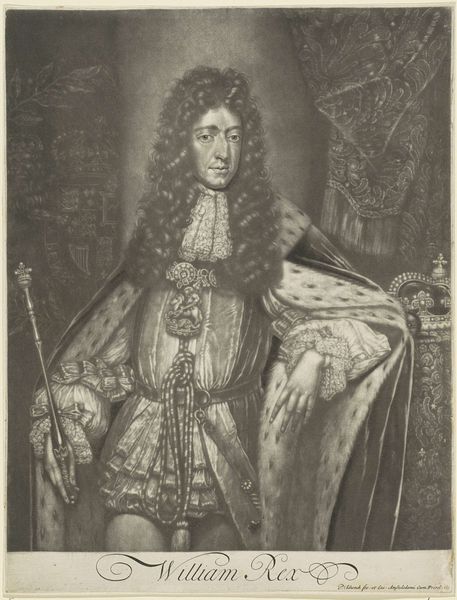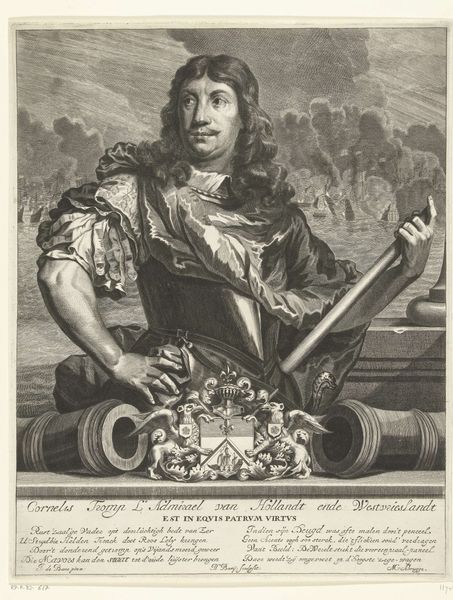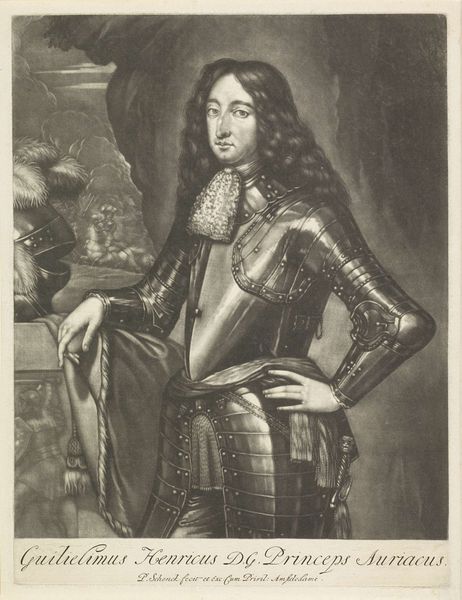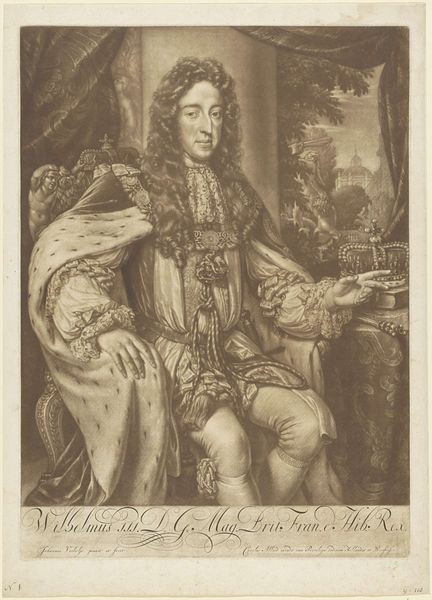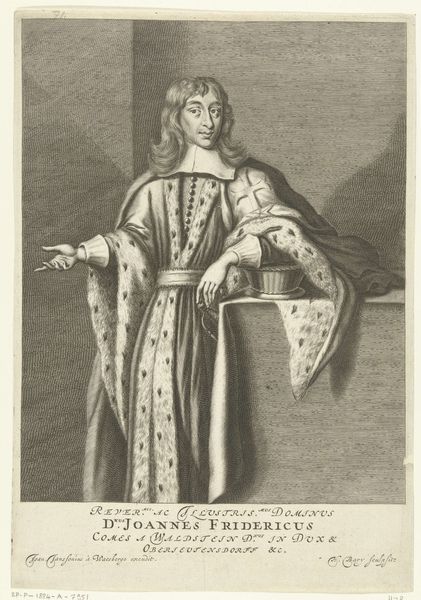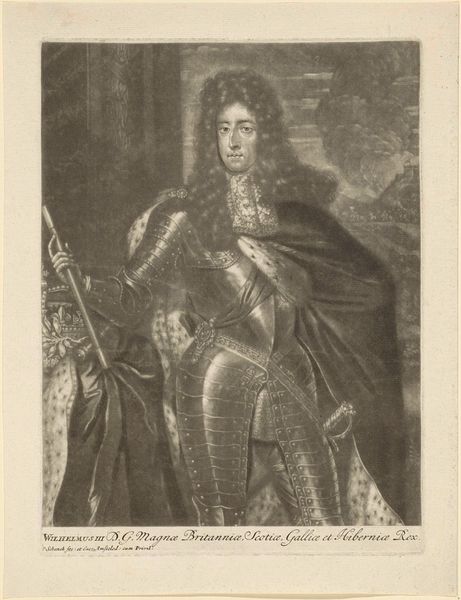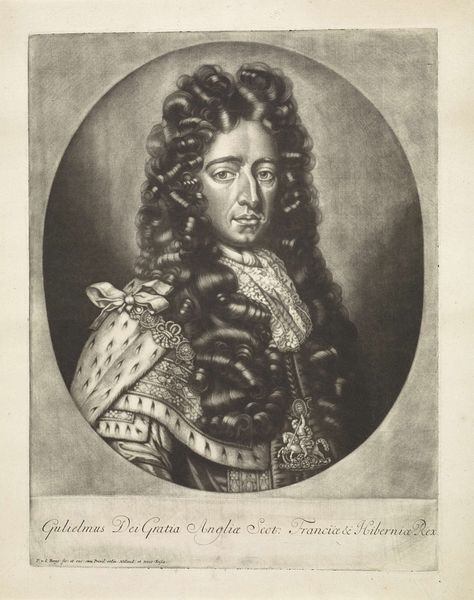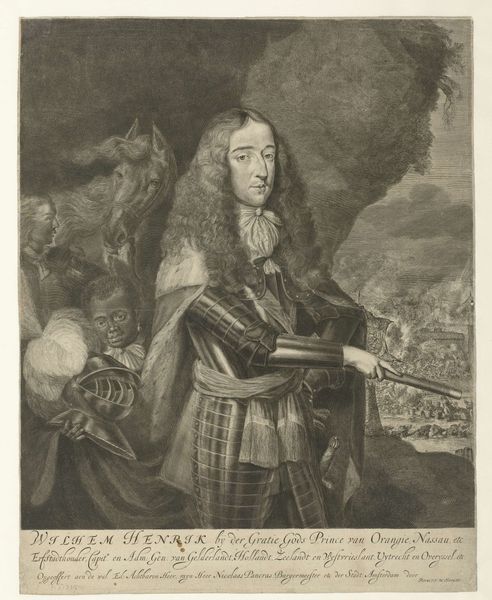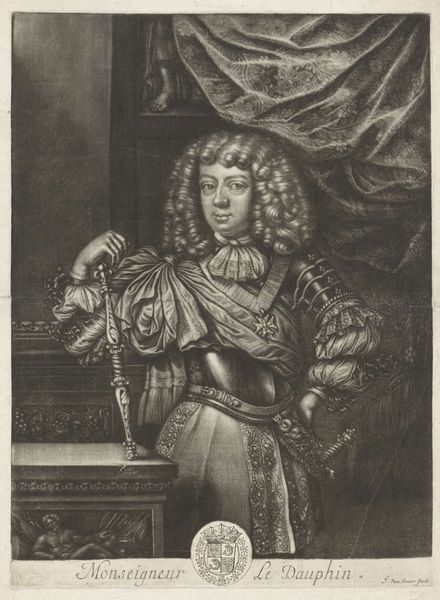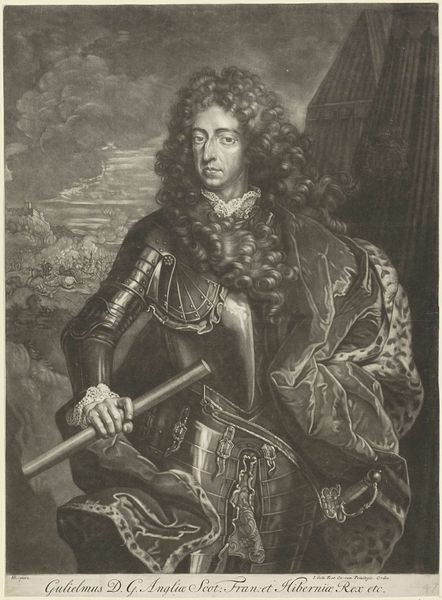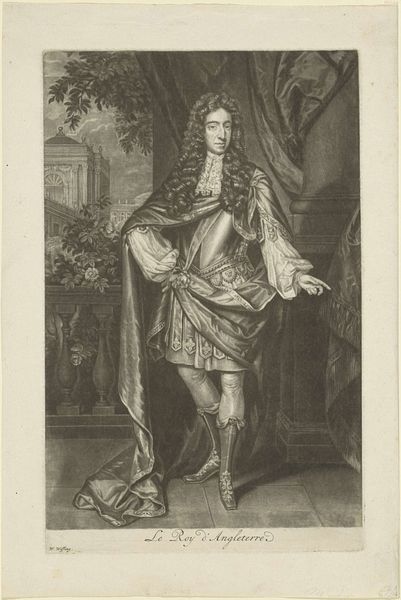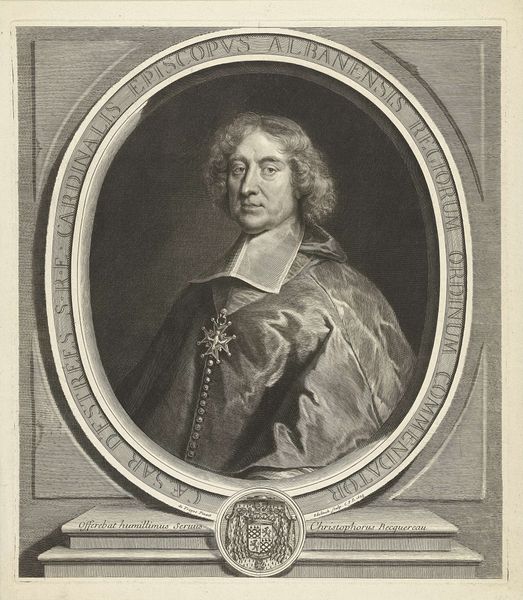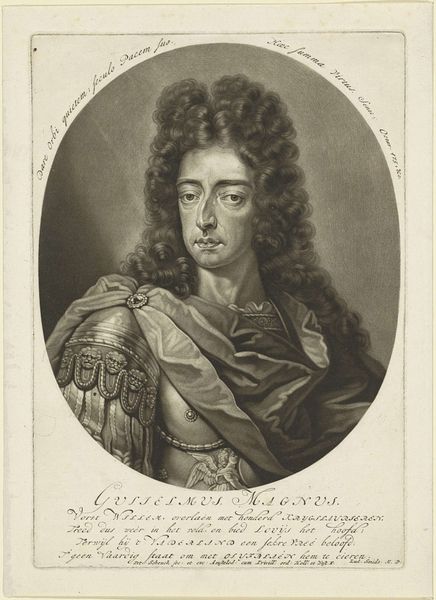
engraving
#
portrait
#
baroque
#
old engraving style
#
history-painting
#
engraving
Dimensions: height 248 mm, width 185 mm
Copyright: Rijks Museum: Open Domain
Curator: This engraving from 1691, titled "Portret van Willem III, prins van Oranje," created by Pieter Schenk, depicts William III against a backdrop of active battle. I find it a striking visual declaration of power during a time of conflict. Editor: Indeed, and what strikes me first is the composition. The duality presented – the portrait of a regal figure juxtaposed with a scene of warfare— immediately sets up a contrast. Is it meant to glorify war, or merely situate William as a powerful actor upon the stage of conflict? Curator: It is definitely making a claim for the justification of power through successful leadership during conflict. Willem III’s reign was defined by warfare, particularly against Louis XIV. Editor: It’s interesting how Schenk situates William. He isn’t on the battlefield, but almost overseeing it, a removed commander making decisions. There is distance, an aristocratic removal from the true violence of the subject matter. Is Schenk seeking to position him as both a regal, god-like king as well as a valiant commander? Curator: In portraying William this way, Schenk aims to consolidate his political standing in the face of challenges to his authority. Note how the surrounding armour also emphasizes William's martial capabilities, even in what could be considered more peaceful contexts. Editor: Exactly. It is a very Baroque sensibility, this need to reinforce power through calculated symbolism. But it also exposes the propaganda inherent within portraiture of rulers: identity is carefully constructed and crafted to suit a purpose. How might audiences at the time reacted, or how are audiences now positioned in how we view this artwork? Curator: It shows the importance of analyzing this work as a deliberate attempt to craft an image of strength and divine right, to connect his identity to the fortunes of military power. Editor: Yes, and it underscores how potent visual rhetoric can be. Considering it through that lens can reveal fascinating perspectives on leadership and the complexities of representing power and national identity. Curator: Absolutely, examining pieces like this engraving gives a potent window into how visual symbols functioned within their cultural and historical contexts. Editor: It also offers food for thought about power dynamics. A single image of someone that might cause very diverse feelings and thoughts!
Comments
No comments
Be the first to comment and join the conversation on the ultimate creative platform.
